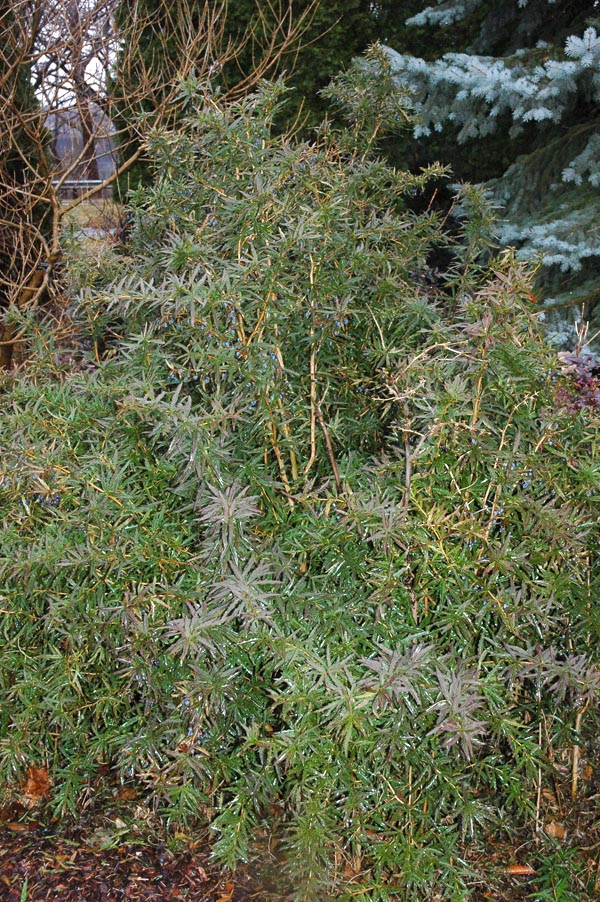
Woody > Berberis > Berberis gagnepainii > Berberis gagnepainii
Berberis gagnepainii
Black Barberry
Origin: China (West Hubei)
| Family |
| Beberidaceae |
| Genus |
| Berberis |
| Species |
| gagnepainii |
| Category |
| Woody |
| Type |
| Shrub (deciduous) |
| Pronunciation |
| USDA Hardiness Zone |
| 5 |
| Canadian Hardiness Zone |
| 4 - 6a |
| RHS Hardiness Zone |
| H7 |
| Temperature (°C) |
| -29 - (-23) |
| Temperature (°F) |
| -20 - (-10) |
| Height |
| 5 m |
| Spread |
| 3 m |
Photographs
Description and Growing Information
Flowering Period
| Cultivation |
| Will thrive in any soil type that is not waterlogged, and should be grown in full sun. |
| Growth |
| Medium |
| Pests |
| The bacteria Pseudomonas berberidis may cause black spots on leaves, and the berberry aphid (Liosomaphis berberidis) may also be a problem. |
| Bark/Stem Description |
| Stems are clustered and yellow, spotted dark brown. |
| Leaf Description |
| Leaves are matt grey-green above and glossy yellow-green beneath, growing to 4 x 2 cm. |
| Flower Description |
| Flowers are bright yellow, appearing in clusters of 7. |
| Fruit Description |
| Fruit is purple-black and ovoid, growing to 1 cm. |
| Propagation |
| Propagate by seed (although offspring may be variable), or by cuttings. |
